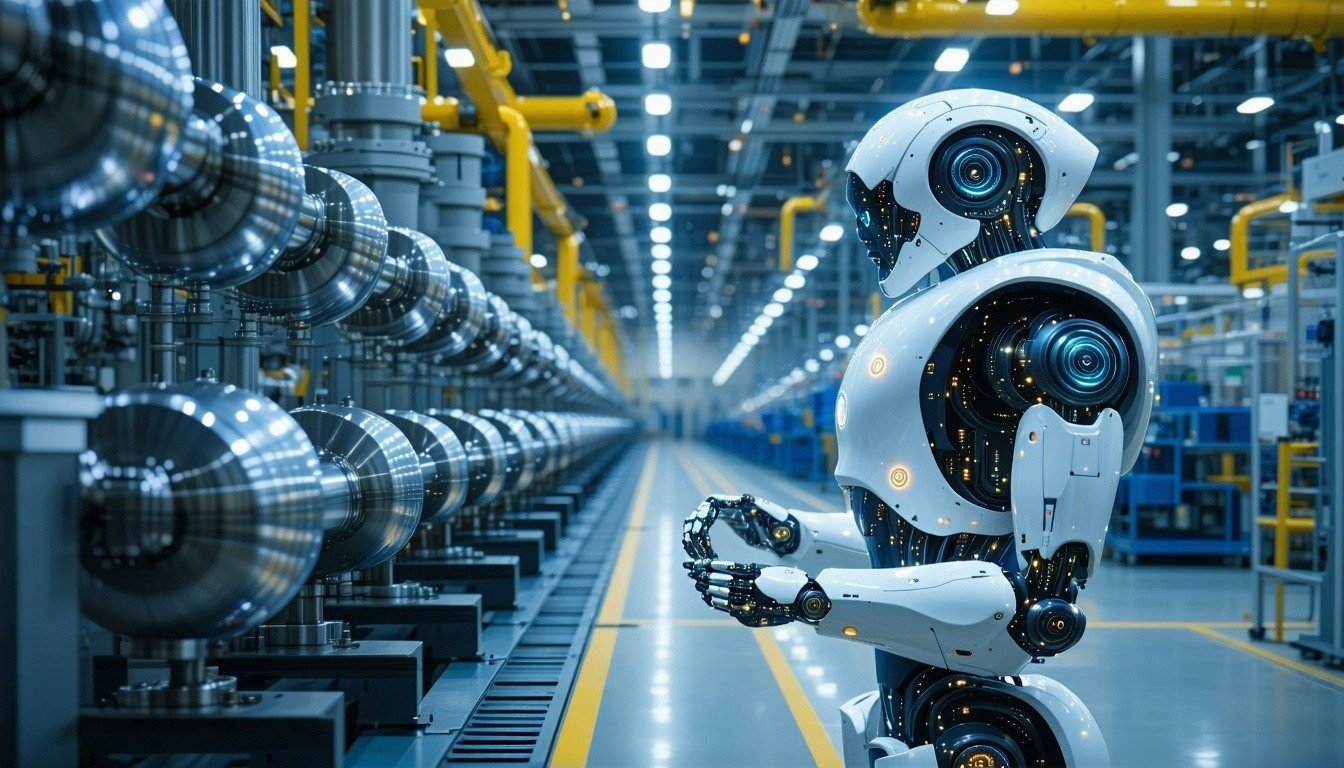The construction industry is one of the world’s largest consumers of resources (sand and building materials) and produces significant waste. Around 40% of global energy consumption can be linked directly to buildings. This sustainability challenge makes the role of smart buildings paramount to meeting zero-emission initiatives worldwide.
Our latest infographic presents four smart building case studies demonstrating software's ability to optimize commercial building resources and reduce the carbon footprint.
Around the world, cities are investing in greater use of software modeling, intelligence, and commercial building design and operation management. Considering that cities are responsible for more than 70% of Greenhouse Gas (GHG) emissions on Earth, it’s the perfect place to start for making buildings more intelligent—and greener.
Smart Building Case Study #1: Architectural Design Software
Who Is It?
Ramboll, a global architecture, engineering, and consultancy firm, tackled the design of a school building in Scotland. This was to meet new Department of Education thermal comfort standards.
What Happened?
The company simulated the performance of the mixing box system case in a winter scenario, with the windows closed and the fans turned on.
The classroom model was designed using Rhino and then imported into the SimScale CFD simulation platform.
Qualitative and quantitative results showed velocity, temperature distribution, and thermal comfort, which can be used to adjust the heating and air conditioning system design or rearrange classroom desks and chairs.
The velocity distribution images (see below) identify three regions of the flow:
- The inlet flow velocity
- The flow velocity through the grills
- The buoyancy draft velocity
Natural convection could be seen near the cold windows.
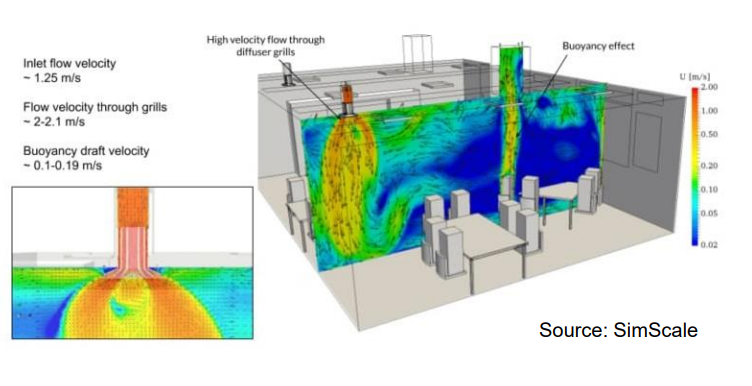
What Were the Results?
This project enabled engineers to predict and optimize the performance of a heating and air conditioning system in the early stages of the building design process—a particularly relevant topic for planning green building projects and obtaining Leadership in Energy and Environmental Design (LEED) certification.
Read More: Top 6 Smart Building Platforms in 2023
Smart Building Case Study #2: Simulation Modeling Software
Who Is It?
The Element office building is a 14,000 Square Meter (m²) prime development in Marousi, Athens.
Inform Design AB is a Swedish consulting practice specializing in façades, building physics, and indoor climate assessments in highly glazed constructions. The company used DesignBuilder to model external movable screens and assess the façade system’s solar performance on an hourly basis.
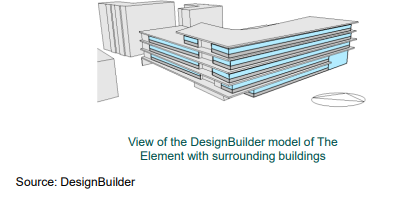
What Happened?
Using simulation software, the company could assess designs to pre-predict the beam and diffuse solar radiation to be transmitted through every time step of the year. Data were then correlated with the real-life measured data from the weather station to provide a shading control strategy.
What Were the Results?
They developed a shading control strategy that suggested banding of screens, accounting for the shading effect of surrounding buildings. Movable screen groups were created to be controlled together, as shown in the figure below. The goal was to avoid closing the screens too often in shaded façade areas and unnecessarily blocking views.
Get the Presentation: Smart Commercial Building Software
Smart Building Case Study #3: Digital Twin
Who Is It?
Microsoft launched its smart buildings pilot in one of its Puget Sound buildings in January 2021 as part of the larger campus modernization project. This case study involves the use of an urban digital twin.
What Happened?
The real estate team uses Internet of Things (IoT)-connected devices with Azure Digital Twins to integrate inputs from previously siloed data sources, such as motion and occupancy sensors. These IoT solutions help evolve the way Microsoft employees interact with their spaces, with a focus on efficiency and productivity.
Microsoft released an open-source smart buildings ontology in collaboration with RealEstateCore, a Swedish consortium of real estate owners, software houses, and research institutions. The ontology is built on Digital Twin Definition Language (DTDL), which enables devices from many vendors to talk to Azure Digital Twins. That includes everything from Heating, Ventilation, and Air Conditioning (HVAC) to security, lighting devices, and legacy and new devices.
What Were the Results?
The system delivers reactive controls informing heating and cooling functions by room occupancy or adjusting carbon dioxide flow or humidity levels related to air quality sensing. In addition, sensors can also trigger maintenance alerts to make early fixes before a piece of equipment breaks.
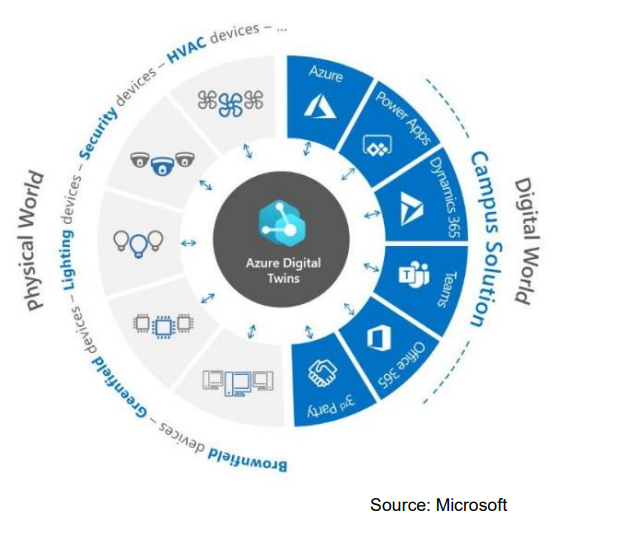
Smart Building Case Study #4: Retrofitting an Opera
Who Is It?
In October 2019, the Sydney Opera House became the first Australian art institution to commit to the United Nations’ Sustainable Development Goals (SDGs). This initiative aims to address the most pressing issues of our time. During the 3-year partnership, the Sydney Opera House and Honeywell collaborated on achieving the Opera House’s goals, including becoming a climate-positive building by 2023.
What Happened?
Honeywell smart sensors measure temperature, humidity, and indoor air quality, as well as electrical and water consumption. The building operates with >60 water meters and >500 electrical meters.
Honeywell’s Building Management and Connected System (BMCS) leverages data drawn from systems, including elevators/lifts, emergency lighting, stage mechanisms, weather services, and ticket systems. These data are used to tie operations to demand, occupancy, and external conditions.
Honeywell's Forge-software and a suite of applications that pulls together real-time data across assets, people, and processes—delivers a full real-time view to support intelligent operations. Domain-specific Artificial Intelligence (AI)/Machine Learning (ML) empowers decision-making to highlight inefficiencies, mitigate risk, reduce cost, and support sustainability goals.
What Were the Results?
The Opera House has already reduced its water consumption by 30% through improved monitoring and reduced energy use by 20%.
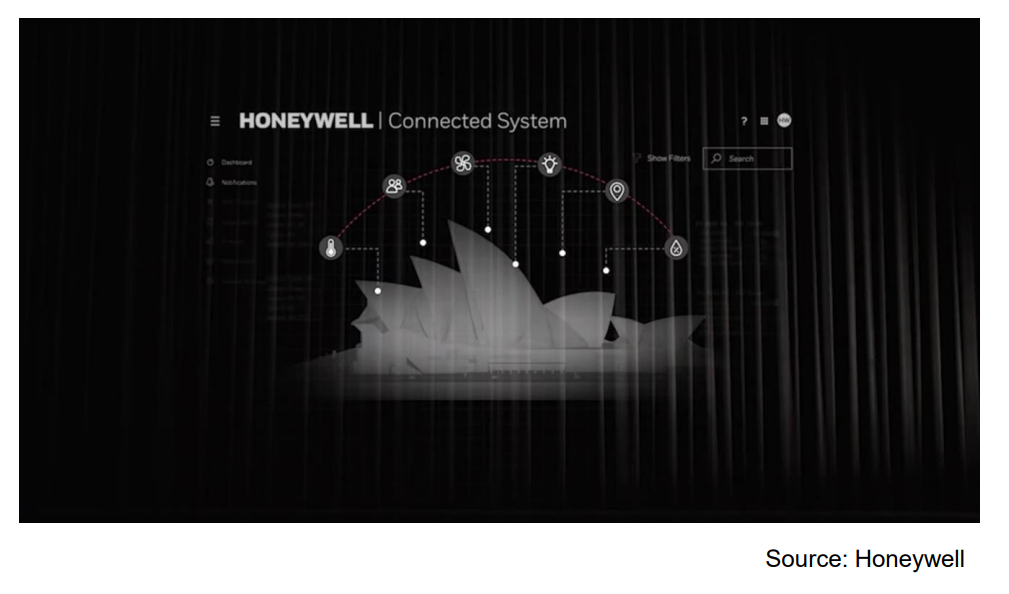
Leverage the Latest Smart Building Research
Architecture, Engineering, Construction, and Operations (AECO) software will drive the development of next-generation commercial smart buildings from conception to operation. This transformation will extend the industry’s digitization and expand Building Information Modeling (BIM) adoption and value.
ABI Research’s Smart Buildings Platforms and Software Spotlight dives deeper into the role of smart commercial buildings in modern real estate/building development. This research assesses enabling technologies, building digitization trends, and key vendors making smart buildings possible. Check out the Spotlight!



